Maximilian Tschuchnig
Enhancing Synthetic CT from CBCT via Multimodal Fusion: A Study on the Impact of CBCT Quality and Alignment
Jun 10, 2025Abstract:Cone-Beam Computed Tomography (CBCT) is widely used for real-time intraoperative imaging due to its low radiation dose and high acquisition speed. However, despite its high resolution, CBCT suffers from significant artifacts and thereby lower visual quality, compared to conventional Computed Tomography (CT). A recent approach to mitigate these artifacts is synthetic CT (sCT) generation, translating CBCT volumes into the CT domain. In this work, we enhance sCT generation through multimodal learning, integrating intraoperative CBCT with preoperative CT. Beyond validation on two real-world datasets, we use a versatile synthetic dataset, to analyze how CBCT-CT alignment and CBCT quality affect sCT quality. The results demonstrate that multimodal sCT consistently outperform unimodal baselines, with the most significant gains observed in well-aligned, low-quality CBCT-CT cases. Finally, we demonstrate that these findings are highly reproducible in real-world clinical datasets.
MixUp-MIL: A Study on Linear & Multilinear Interpolation-Based Data Augmentation for Whole Slide Image Classification
Nov 06, 2023Abstract:For classifying digital whole slide images in the absence of pixel level annotation, typically multiple instance learning methods are applied. Due to the generic applicability, such methods are currently of very high interest in the research community, however, the issue of data augmentation in this context is rarely explored. Here we investigate linear and multilinear interpolation between feature vectors, a data augmentation technique, which proved to be capable of improving the generalization performance classification networks and also for multiple instance learning. Experiments, however, have been performed on only two rather small data sets and one specific feature extraction approach so far and a strong dependence on the data set has been identified. Here we conduct a large study incorporating 10 different data set configurations, two different feature extraction approaches (supervised and self-supervised), stain normalization and two multiple instance learning architectures. The results showed an extraordinarily high variability in the effect of the method. We identified several interesting aspects to bring light into the darkness and identified novel promising fields of research.
Inflation forecasting with attention based transformer neural networks
Mar 29, 2023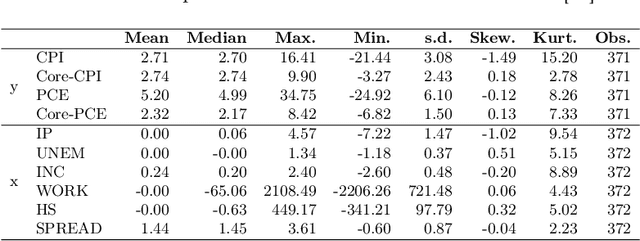
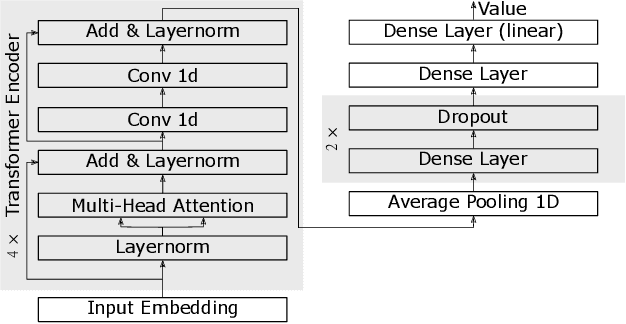
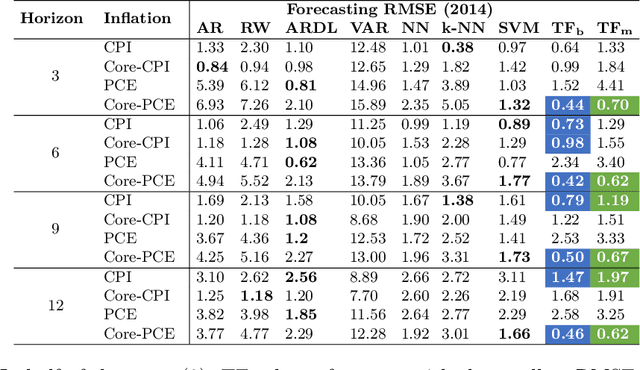
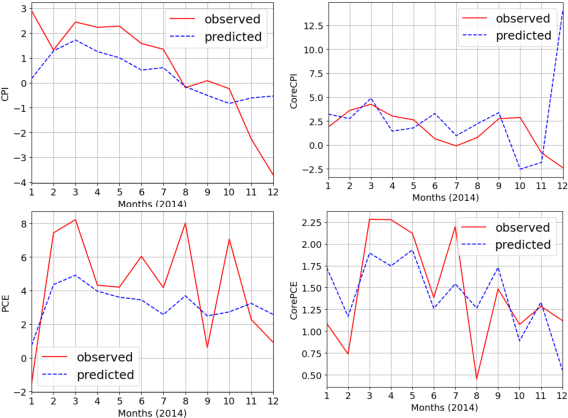
Abstract:Inflation is a major determinant for allocation decisions and its forecast is a fundamental aim of governments and central banks. However, forecasting inflation is not a trivial task, as its prediction relies on low frequency, highly fluctuating data with unclear explanatory variables. While classical models show some possibility of predicting inflation, reliably beating the random walk benchmark remains difficult. Recently, (deep) neural networks have shown impressive results in a multitude of applications, increasingly setting the new state-of-the-art. This paper investigates the potential of the transformer deep neural network architecture to forecast different inflation rates. The results are compared to a study on classical time series and machine learning models. We show that our adapted transformer, on average, outperforms the baseline in 6 out of 16 experiments, showing best scores in two out of four investigated inflation rates. Our results demonstrate that a transformer based neural network can outperform classical regression and machine learning models in certain inflation rates and forecasting horizons.
MixUp-MIL: Novel Data Augmentation for Multiple Instance Learning and a Study on Thyroid Cancer Diagnosis
Nov 10, 2022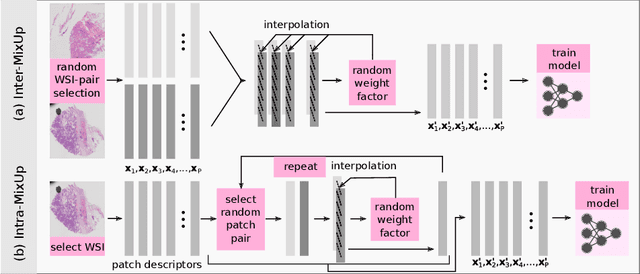
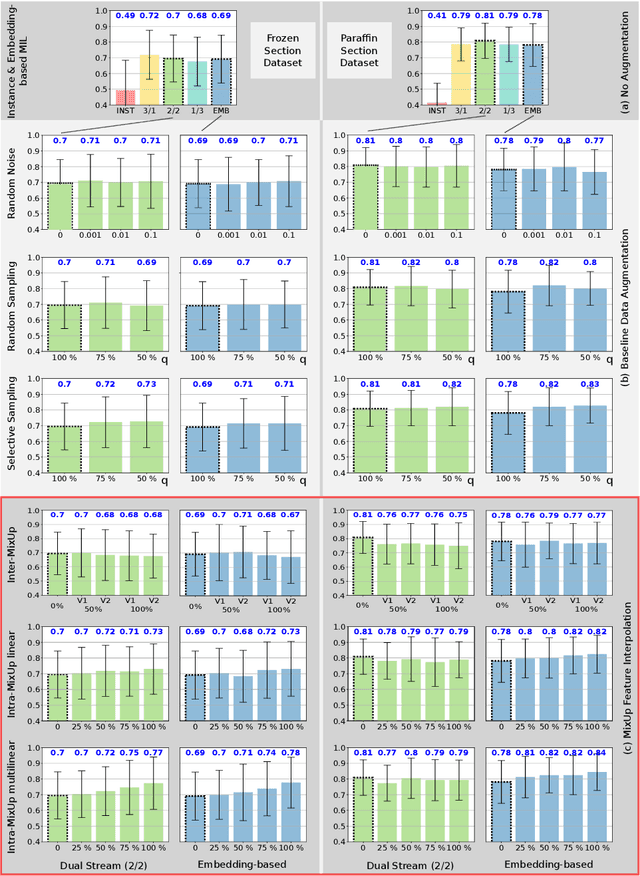
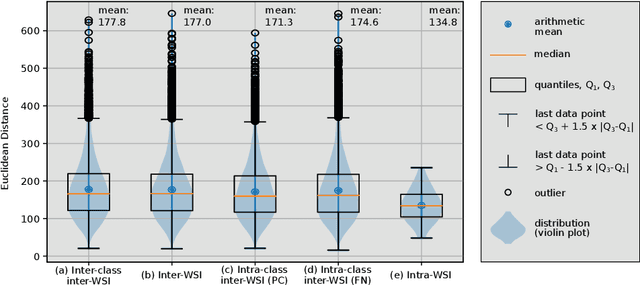
Abstract:Multiple instance learning exhibits a powerful approach for whole slide image-based diagnosis in the absence of pixel- or patch-level annotations. In spite of the huge size of hole slide images, the number of individual slides is often rather small, leading to a small number of labeled samples. To improve training, we propose and investigate different data augmentation strategies for multiple instance learning based on the idea of linear interpolations of feature vectors (known as MixUp). Based on state-of-the-art multiple instance learning architectures and two thyroid cancer data sets, an exhaustive study is conducted considering a range of common data augmentation strategies. Whereas a strategy based on to the original MixUp approach showed decreases in accuracy, the use of a novel intra-slide interpolation method led to consistent increases in accuracy.
Multiple Instance Learning for Digital Pathology: A Review on the State-of-the-Art, Limitations & Future Potential
Jun 09, 2022


Abstract:Digital whole slides images contain an enormous amount of information providing a strong motivation for the development of automated image analysis tools. Particularly deep neural networks show high potential with respect to various tasks in the field of digital pathology. However, a limitation is given by the fact that typical deep learning algorithms require (manual) annotations in addition to the large amounts of image data, to enable effective training. Multiple instance learning exhibits a powerful tool for learning deep neural networks in a scenario without fully annotated data. These methods are particularly effective in this domain, due to the fact that labels for a complete whole slide image are often captured routinely, whereas labels for patches, regions or pixels are not. This potential already resulted in a considerable number of publications, with the majority published in the last three years. Besides the availability of data and a high motivation from the medical perspective, the availability of powerful graphics processing units exhibits an accelerator in this field. In this paper, we provide an overview of widely and effectively used concepts of used deep multiple instance learning approaches, recent advances and also critically discuss remaining challenges and future potential.
Frozen-to-Paraffin: Categorization of Histological Frozen Sections by the Aid of Paraffin Sections and Generative Adversarial Networks
Dec 15, 2020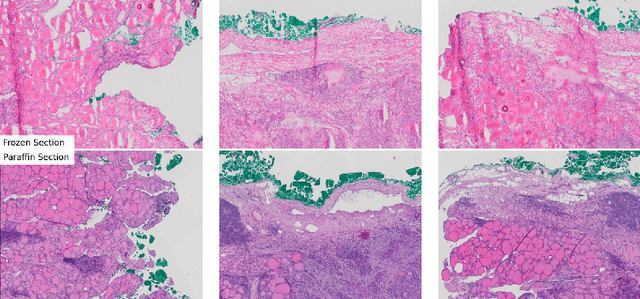
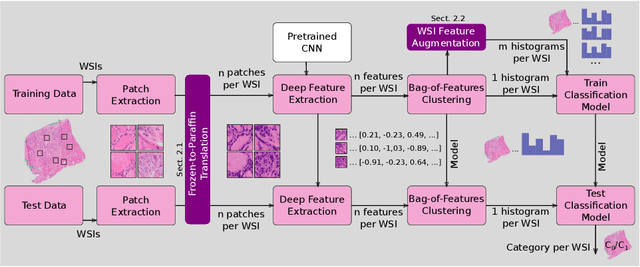
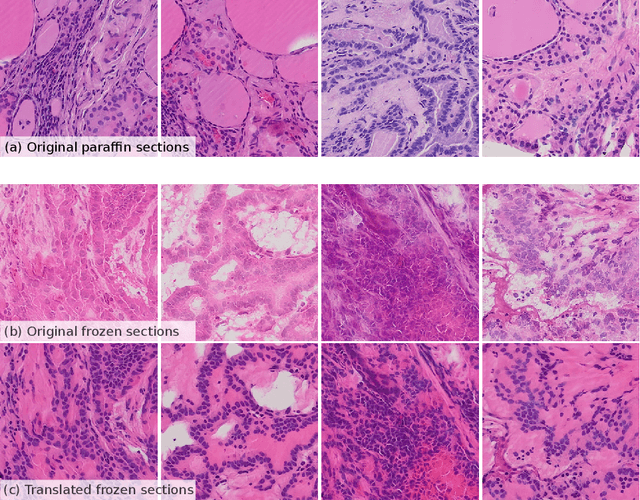
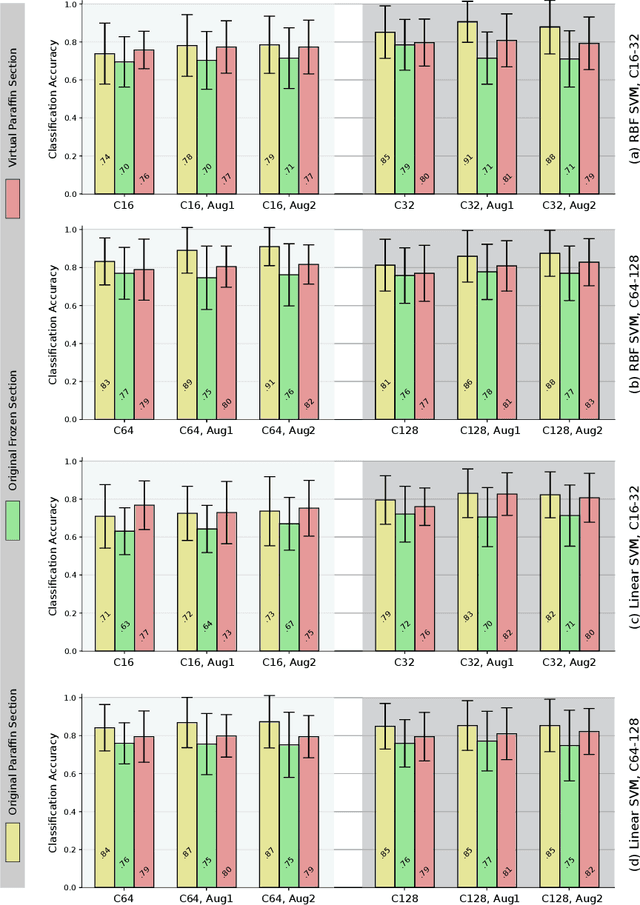
Abstract:In contrast to paraffin sections, frozen sections can be quickly generated during surgical interventions. This procedure allows surgeons to wait for histological findings during the intervention to base intra-operative decisions on the outcome of the histology. However, compared to paraffin sections, the quality of frozen sections is typically lower, leading to a higher ratio of miss-classification. In this work, we investigated the effect of the section type on automated decision support approaches for classification of thyroid cancer. This was enabled by a data set consisting of pairs of sections for individual patients. Moreover, we investigated, whether a frozen-to-paraffin translation could help to optimize classification scores. Finally, we propose a specific data augmentation strategy to deal with a small amount of training data and to increase classification accuracy even further.
An Asymetric Cycle-Consistency Loss for Dealing with Many-to-One Mappings in Image Translation: A Study on Thigh MR Scans
May 19, 2020



Abstract:Generative adversarial networks using a cycle-consistency loss facilitate unpaired training of image-translation models and thereby exhibit a very high potential in manifold medical applications. However, the fact that images in one domain potentially map to more than one image in another domain (e.g. in case of pathological changes) exhibits a major challenge for training the networks. In this work, we offer a solution to improve the training process in case of many-to-one mappings by modifying the cycle-consistency loss. We show formally and empirically that the proposed method improves the performance significantly without radically changing the architecture and without increasing the overall complexity. We evaluate our method on thigh MRI scans with the final goal of segmenting the muscle in fat-infiltrated patients' data.
 Add to Chrome
Add to Chrome Add to Firefox
Add to Firefox Add to Edge
Add to Edge